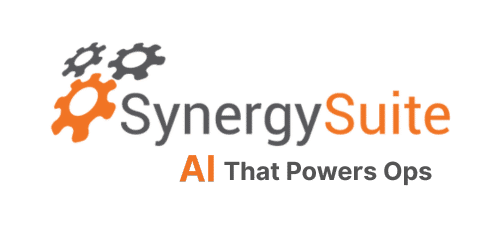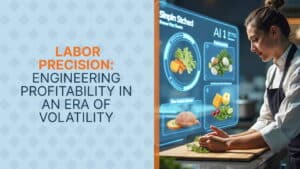Updated on: June 21, 2024
A recent study by the National Restaurant Association found, one in three of quick-service openings and one in four fast-casual job openings go to people getting their first work experience in hospitality.
Anyone who’s worked in the foodservice industry knows that employees are the lifeblood of customer satisfaction. Anyone who’s worked in the foodservice industry also knows that positive customer experiences are vital for good word of mouth and repeat business, but lack of experience can negatively impact your business!
This is important for several reasons, not the least of which is that you’ll have a harder time digging yourself out of the hole of negative customer experiences than you will delivering good service on a regular basis.
As a savvy restaurant owner, you may be running a well-structured training program for new staff in the hopes that they’ll learn quickly and become more productive, but you might be missing a critical piece in your evaluation of staff growth –the impact new staff are having on sales and profitability.
Labor costs are one of the largest expenses in the restaurant business.
There are four key metrics restaurants need to keep track of when on-boarding new staff to evaluate their impact on operating profit.
Sales per Labor Hour
There are a lot of productivity metrics and key performance indicators to choose from when evaluating labor performance. Understanding the sales per labor hour metric and calculation is important if you want to increase hour to hour productivity and maximize profits.
What is Sales per Labor Hour?
Sales per labor hour is a way of measuring the productivity of your staff.
It’s an analysis that takes into account sales revenue earned and labor hours recorded. Analysis of your sales per labor hour can help you determine if you are getting a good return on the investment in your staff. Since you’re likely spending a lot of money on labor, you want to make sure you’re maximizing your return on that expenditure.
According to the NRA, for limited-service restaurants, the median total sales per full-time equivalent employee is $45.33 per hour ($68,571 per year). The sales per labor hour metric gives you insight into the productivity of your staff. Is your staff reaching $45 per hour in sales?
How do you Calculate Sales per Labor Hour?
To calculate sales per labor hour, you divide the total amount of revenue earned by the number of labor hours worked by all employees. Sales per labor hour is also referred to as sales per employee hour, and it enables you to make adjustment to hit your target profits. It will also help you determine if you’ve budgeted too much for labor. You may need to cut the number of employees to maximize profitability. Knowing your average restaurant sales can also be helpful. Be sure to make a frequent analysis of every metric to ensure you’re measuring all you need to have the most success.
What’s the Best Way to Track Sales per Hour?
The best way to track the metric of sales per labor hour is through a cloud-based restaurant management system. Having a single platform to manage this data that integrates with your POS is the first step to improving your sales per labor hour. Then you’ll be able to see as you teach and nurture new staff your sales per labor hour will rise during their shifts.
Average Cover
Table service restaurants need to track a slightly different measurement – average cover, which measures how effective each employee is at maximizing sales for each table in their section, as one server may have a bigger section than another server. The easiest way to measure this is through a cloud-based system that integrates with your POS. You’ll start to see the best servers sell more to each person and average cover accurately measures this.
Up-Selling
One of the key reasons new staff may not meet their sales targets is that they are not up-selling.
Up-selling is an excellent practical strategy for increasing money per labor hour. Essentially, you’re tapping into a customer demand that the customer might not have known was there. Good training on the menu and specific descriptions of key items is important. You need to maximize selling time when there is a guest in the seat, and tracking up-selling by employees will identify the servers leaving dollars on the table.
Food Costs
For limited service restaurants, new staff can have a huge impact on cost of goods sold.
Many restaurants lose profit from new cooks due to incorrect portioning, waste, and unrecorded sales. In this industry, a successful restaurant business can quickly become an unsuccessful one if food costs spiral out of control. A daily prime cost report measures these problems and identifies the root cause of an issue quickly. You can identify shifts where waste is higher than average or food cost for a particular item is above the norm. Armed with this intel you can start asking your managers the right questions.
Once you’ve identified an issue in your operations, you can start fixing it with new training programs or specific one-on-one training. The hardest part is actually tracking the metrics. Modern back-office software gives managers access to these metrics on their mobile devices in an easy-to-use format. Data can be pulled from multiple POS platforms and updated in real-time via the cloud, so you always have accurate, current analysis at your fingertips to measure and manage staff productivity.
Labor Management Software and More
Calculating sales per hour is just one of the ways that SynergySuite can help you and your management team manage your staff and make informed decisions to maximize efficiency.
Our suite of software applications can help you manage employee records and make employee scheduling a snap.
We can help you gather actual sales data in real time, generate sales reports for you and help you analyze historical sales data.
Want to increase daily and weekly sales and maximize the efficiency of your budget over time? We’ve been helping all types of businesses in this industry increase their sales revenue and we would love to help you too.
Get in touch with our team today and schedule a personalized demo so we can show you how our award-winning approach to productivity management can help you.




